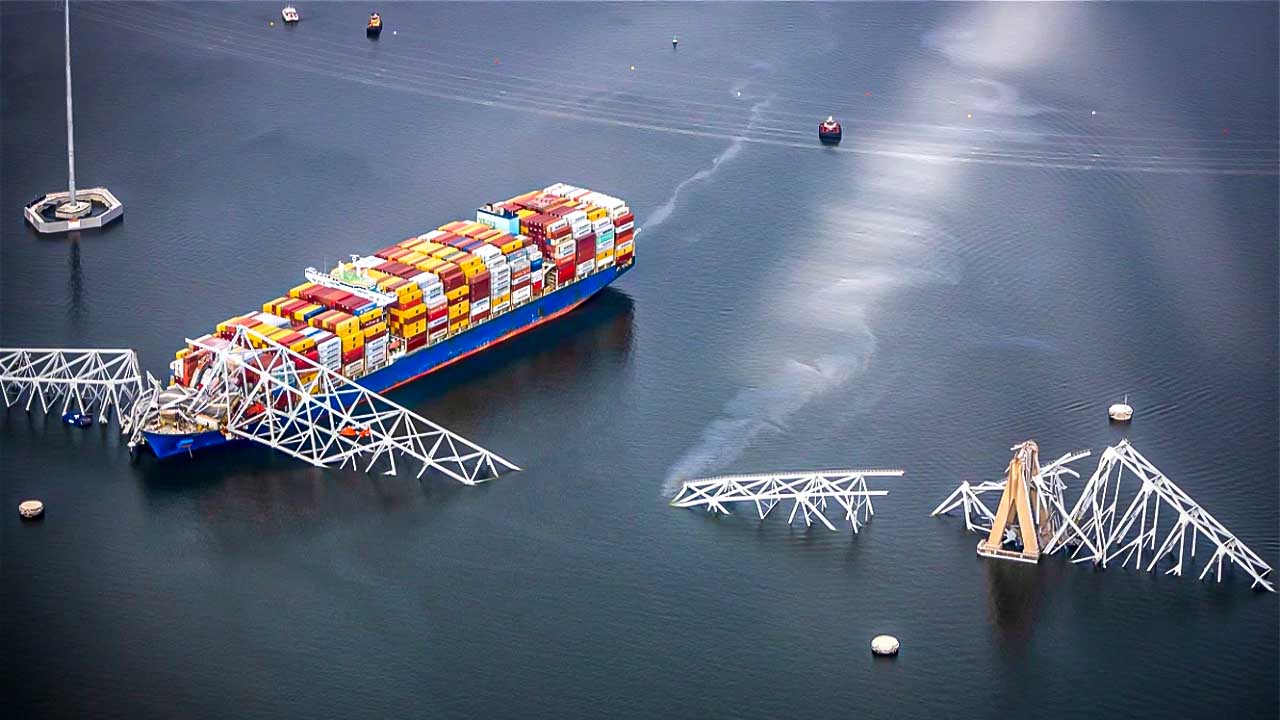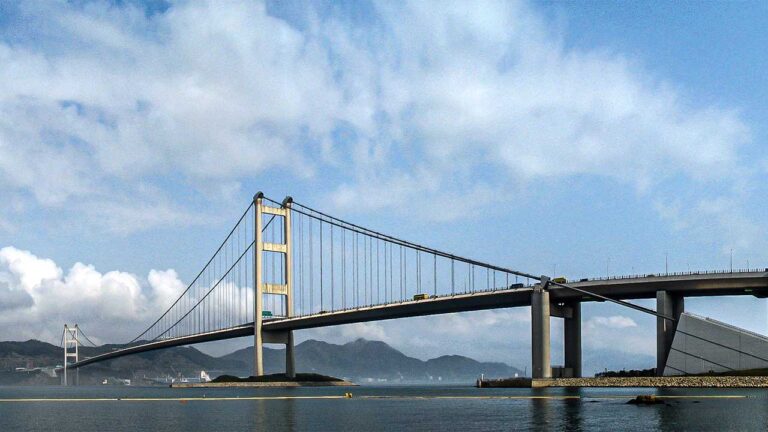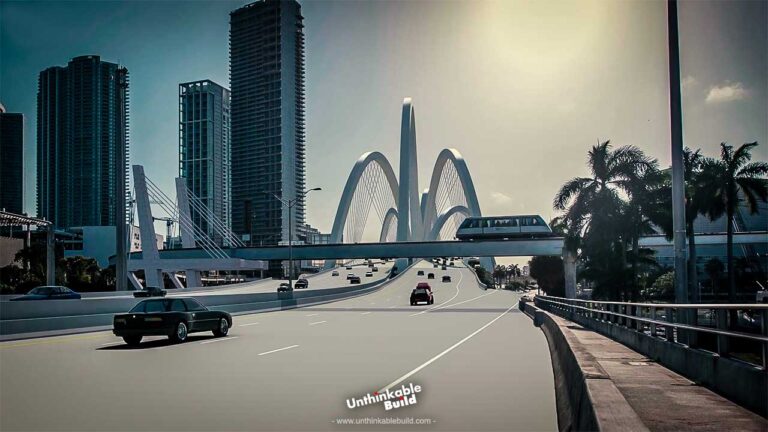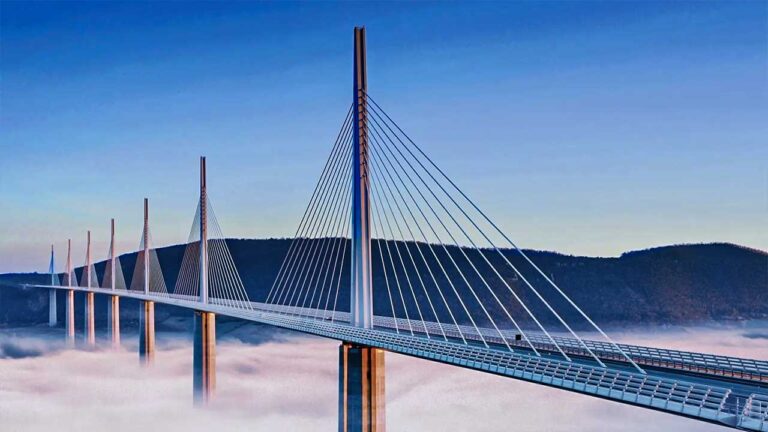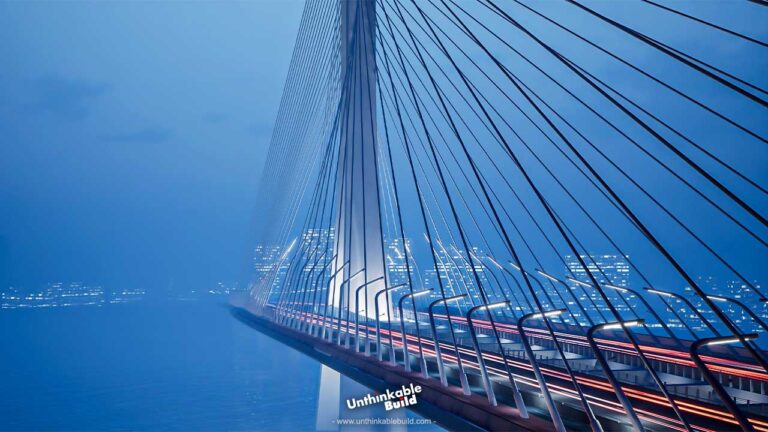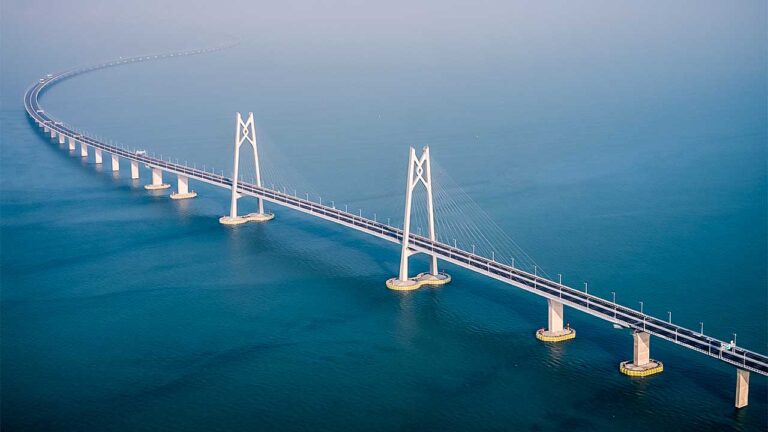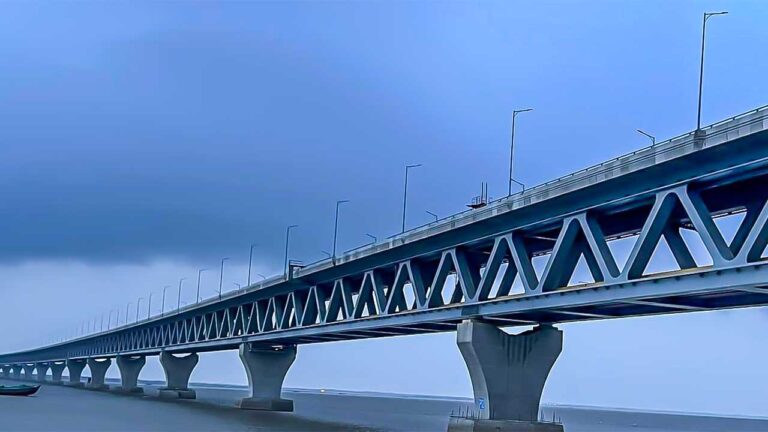US Economy after the Francis Scott Key Bridge Collapse
Baltimore city, situated in Maryland’s eastern region in the United States, holds significant historical significance. Inhabited by Native Americans from as early as the 10th millennium BC, the area witnessed the settlement of Paleo-Indians.
The Helen Delich Bentley Port of Baltimore holds significant importance as one of the country’s largest and most vital port facilities. Its strategic location along the tidal basins of the Patapsco River, near the Chesapeake Bay, positions it as a key gateway for maritime commerce and transportation along the East Coast of the United States.
The port’s infrastructure and capabilities establish it as a vital connection in global supply chains, facilitating the efficient and dependable flow of goods between domestic and international markets. Its importance transcends Maryland, influencing trade dynamics and logistical networks across the United States and beyond.
However, as of March 26, 2024, ship access to the port has been obstructed due to a significant incident. The collapse of the main spans and part of the northeastern approach of the Francis Scott Key Bridge occurred after the container ship MV Dali collided with one of its piers.
The Francis Scott Key Bridge, a steel arch continuous through truss bridge, stretched across the lower Patapsco River and outer Baltimore Harbor. It served as a crucial link for the Baltimore Beltway, connecting Hawkins Point, a secluded southern neighborhood of Baltimore, with Dundalk in Maryland. Additionally, the bridge facilitated travel between Baltimore City and Baltimore County, traversing a small section of Anne Arundel County.
The Francis Scott Key Bridge, under the management of the Maryland Transportation Authority, operated as a toll bridge. Positioned as the farthest crossing of Baltimore’s Harbor, it joined the Baltimore Harbor and Fort McHenry tunnels as essential toll points. Annually, an estimated 11.5 million vehicles traversed the bridge. Recognized as a designated hazardous materials truck route, the bridge provided a crucial alternative to the tunnels where such materials were prohibited.
Also Read: Ben Gurion Canal will Drastically Reshape Regional Power Dynamics
Following the inauguration of the Baltimore Harbor Thruway and Tunnel in 1957, the Maryland State Roads Commission recognized the necessity for an additional crossing over the harbor. Thus, they initiated the planning of a second tunnel beneath the Patapsco River, positioned southeastward, downstream from the Baltimore Harbor Tunnel. The proposed location lay between Hawkins Point and Sollers Point in the outer harbor. Simultaneously, preparations were underway for a drawbridge southward over Curtis Creek, intended to replace a previous 1931 drawbridge accommodating Pennington Avenue over the creek. This drawbridge aimed to establish a connection between Hawkins Point and Sollers Point.
The project was financed by a $220 million bond issue alongside the twinning of the Chesapeake Bay Bridge in October 1968. Bids for constructing the proposed Outer Harbor Tunnel were opened in July 1970, but price proposals were substantially higher than the engineering estimates. Officials drafted alternative plans, including a four-lane bridge, which the US General Assembly approved in April 1971.
The bridge would provide a route across the Baltimore Harbor for vehicles transporting hazardous materials, which are prohibited from both the Baltimore Harbor and Fort McHenry tunnels. The United States Coast Guard issued its bridge permit in June 1972, replacing an earlier approval of the tunnel from the Army Corps of Engineers. Construction of the Outer Harbor Bridge began in 1972, several years behind schedule and $33 million over budget.
The bridge, inaugurated on March 23, 1977 after five years of construction, bears the name of poet Francis Scott Key, who was born in 1779 and authored the lyrics to the American national anthem, “The Star-Spangled Banner” in 1814. Originally referred to as the Outer Harbor Crossing, its name was changed in 1976 while still in the construction phase to honor Key. Over time, it has also been commonly known as Key Bridge or Beltway Bridge.
With a main span measuring 366 meters, it ranked as the third longest continuous truss span globally, boasting a total length of over 2.6 kilometers with a vertical clearance of 56 meters. Following the Chesapeake Bay Bridge, it stood as the second-longest bridge within the Baltimore metropolitan area.
Designed in a distinctive metal truss style with a suspended deck, the Key Bridge suffered a catastrophic collapse on March 26, 2024 following a collision with a container ship. The impact targeted a main concrete pier, a vital structural element resting on underwater soil, leading to the bridge’s total collapse. Structural engineers note that this type of bridge lacks the capacity to redistribute loads in the event of a main pier failure, resulting in a progressive collapse sequence.
The vessel responsible for the collision was the Singapore-registered 300-meters long ship named the MV Dali, en route to Sri Lanka. All 22 crew members and two pilots aboard the ship have been located, with no reports of injuries.
Following the collision, several vehicles plunged into the river from the bridge, resulting in the disappearance of six workers who are now believed to have perished.
Also Read: Indonesia’s Cirata Floating Photovoltaic Power Plant is Largest in Southeast Asia
In the wake of the incident, maritime traffic to and from the seaport has been halted. Nevertheless, the port remains operational, and truck operations continue within the maritime terminals.
During his comments regarding the incident, US President Joe Biden assured that “the federal government will cover the full expense of rebuilding the Francis Scott Key Bridge.” He further confirmed that all necessary resources were being mobilized to aid in the response to the situation.
In a swift response to Maryland Governor Wes Moore’s call, the US government has unleashed a whopping $60 million emergency fund to kick-start the cleanup of the bridge wreckage.
Conversely, Maryland’s U.S. Senator Chris Van Hollen announced that the Small Business Administration has granted the state’s plea for a disaster declaration. This designation enables small businesses impacted by the calamity to seek emergency low-interest loans, with amounts reaching up to $2 million, until the conclusion of 2024.
Now, the race is on to clear the channel, get shipping back on track, and extend a helping hand to all those affected by this tragedy – workers, families, and first responders alike. But there’s a mammoth task ahead: figuring out how to free the vessel, trapped under heaps of bridge debris and loaded with thousands of containers.
For the time being, workers are refraining from attempting to dislodge a mangled section of the bridge’s superstructure that currently lies atop the bow of the Dali, the 300-meter container ship flying the flag of Singapore, responsible for the bridge’s collapse. Governor Wes Moore indicated uncertainty regarding the timeline for relocating the ship but assured that its hull, although damaged, remains intact.
At the outset, a formidable fleet consisting of 7 floating cranes, 10 tugboats, 9 barges, 8 salvage vessels, and 5 coast guard vessels descended upon the 700-foot-wide channel, ready to tackle the task at hand.
At the site of the bridge collapse, US Representative David Trone of Maryland emphasized that the closure of the port could result in staggering economic losses, estimated at up to $15 million per day by state and federal authorities.
Furthermore, Governor Wes Moore’s office highlighted the critical role of the port, directly sustaining over 15,000 jobs and indirectly supporting an additional 140,000 jobs reliant on port activity.
Ships destined for Baltimore are presently anchored outside the port, awaiting redirection to alternate ports along the East Coast of the United States. Ports in Philadelphia, Delaware, New Jersey, South Carolina, Florida, and Georgia may experience an influx of additional cargo as a result. Although the Georgia Ports Authority, overseeing ports in Savannah and Brunswick, has the capacity to handle increased cargo, it cannot single-handedly compensate for the loss experienced by Baltimore.
Secretary of Transportation Pete Buttigieg emphasized that it is premature to determine the timeline for reopening the Port of Baltimore or constructing a replacement for the collapsed bridge. He pointed out that the initial construction of the bridge itself required a five-year period.

